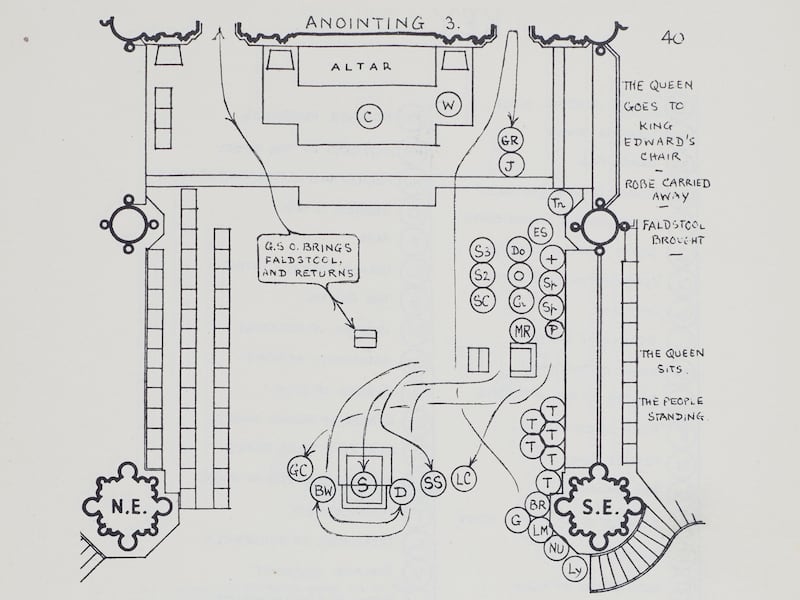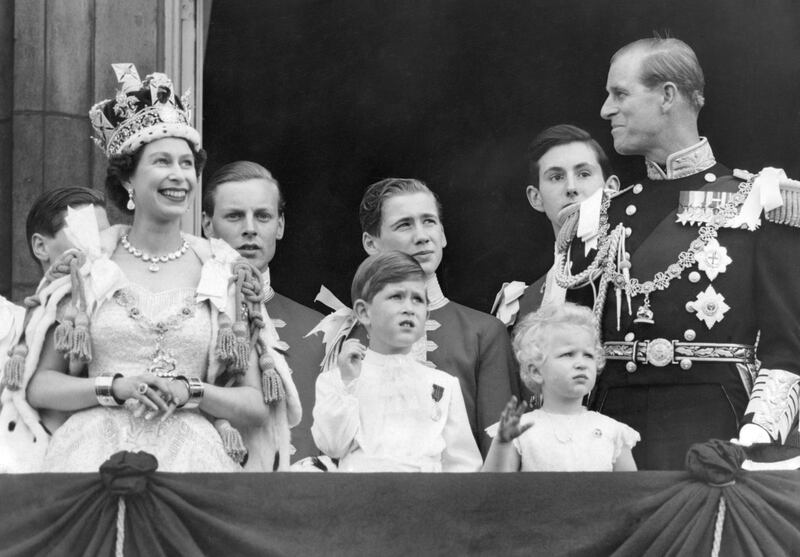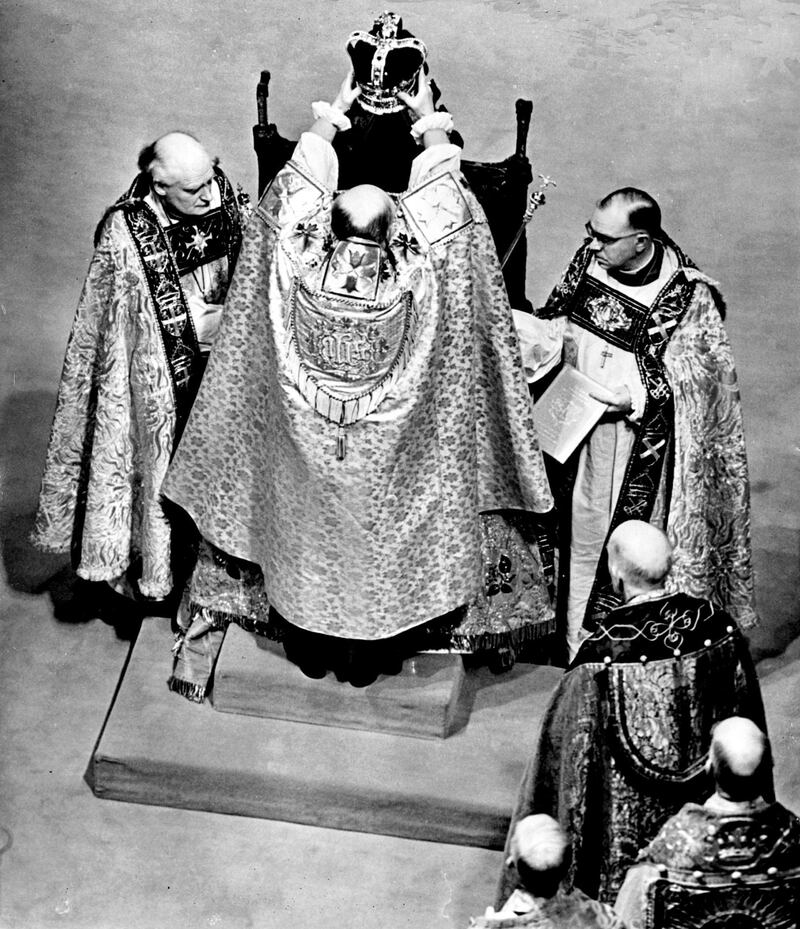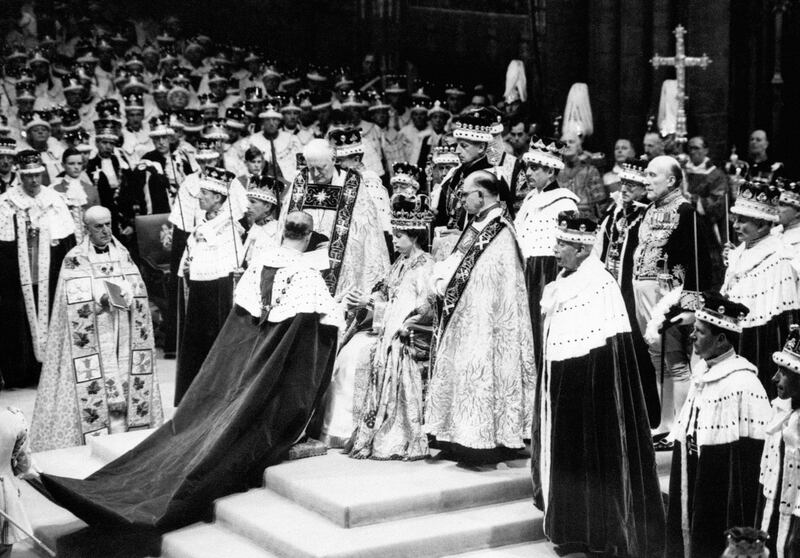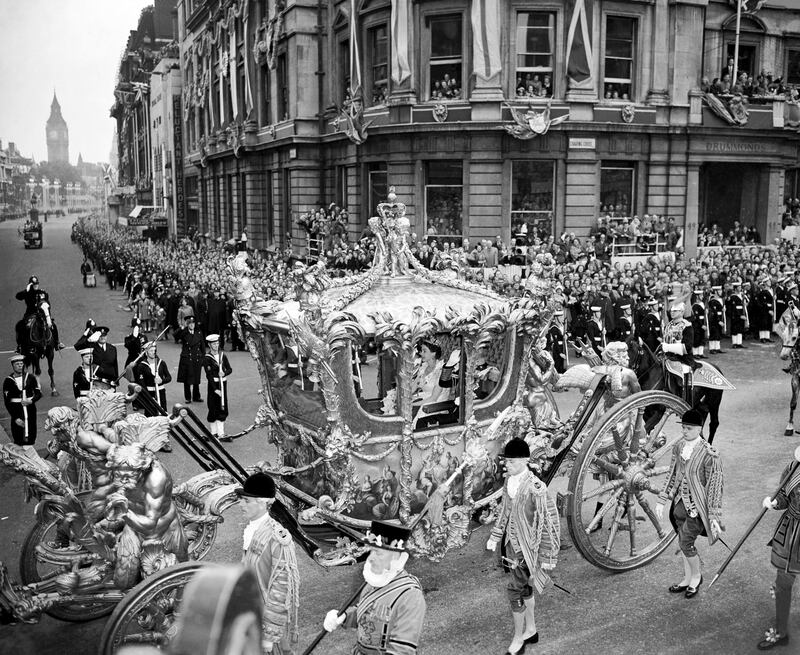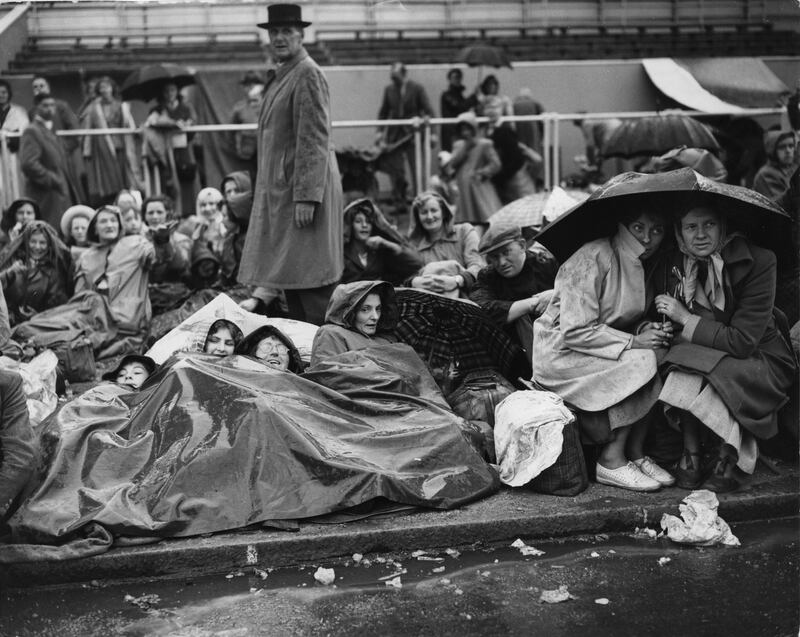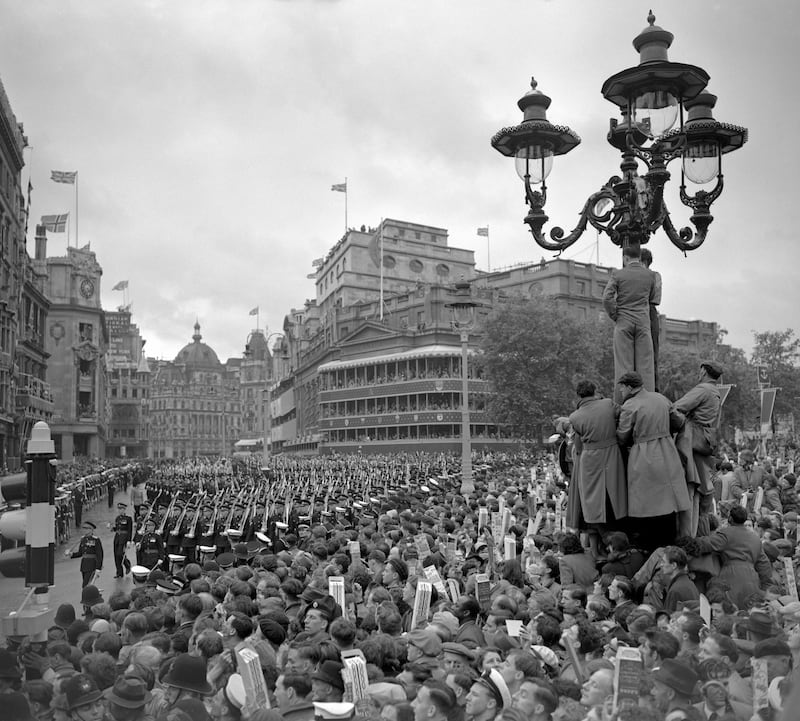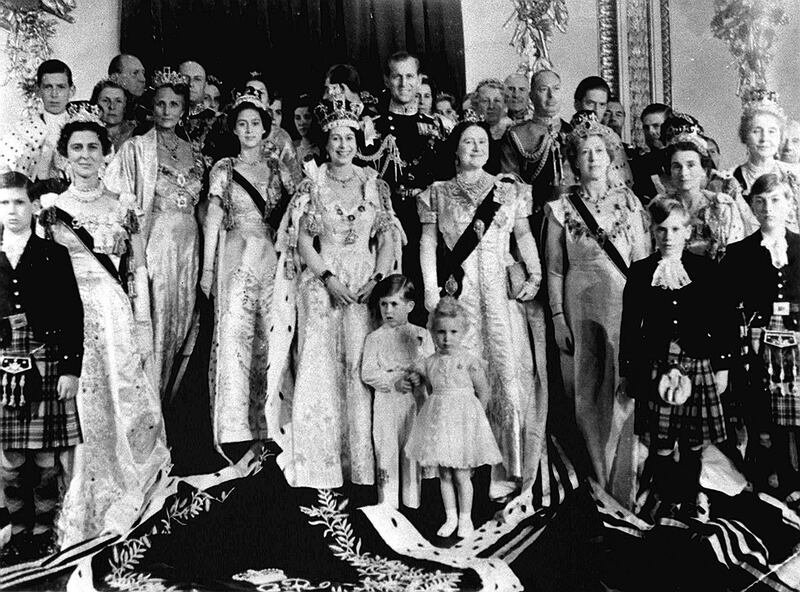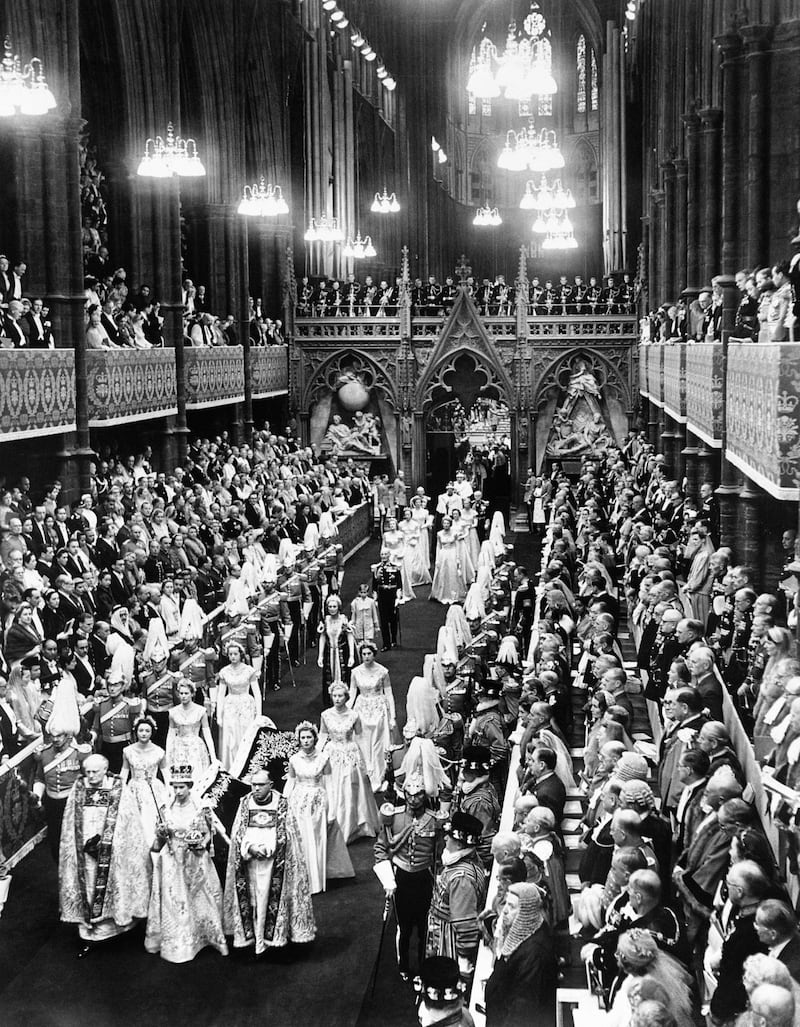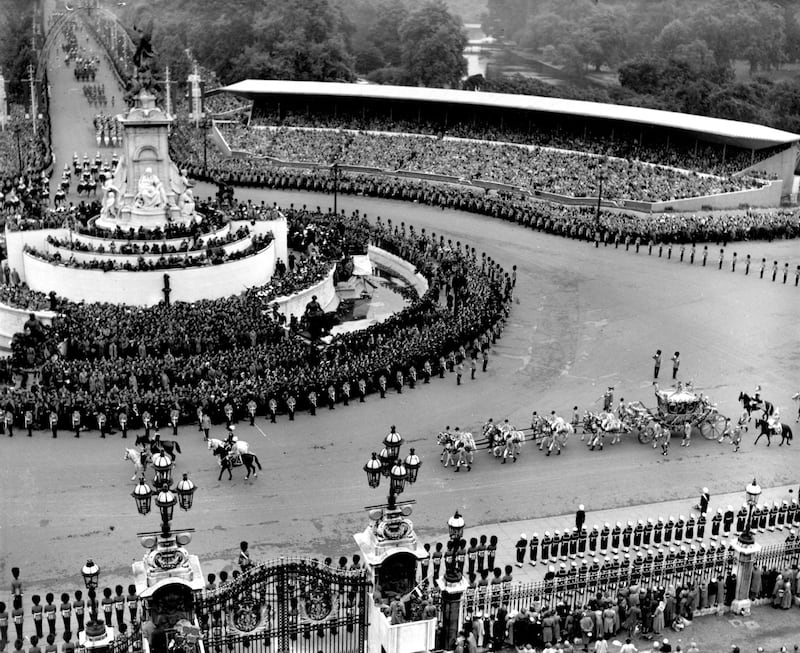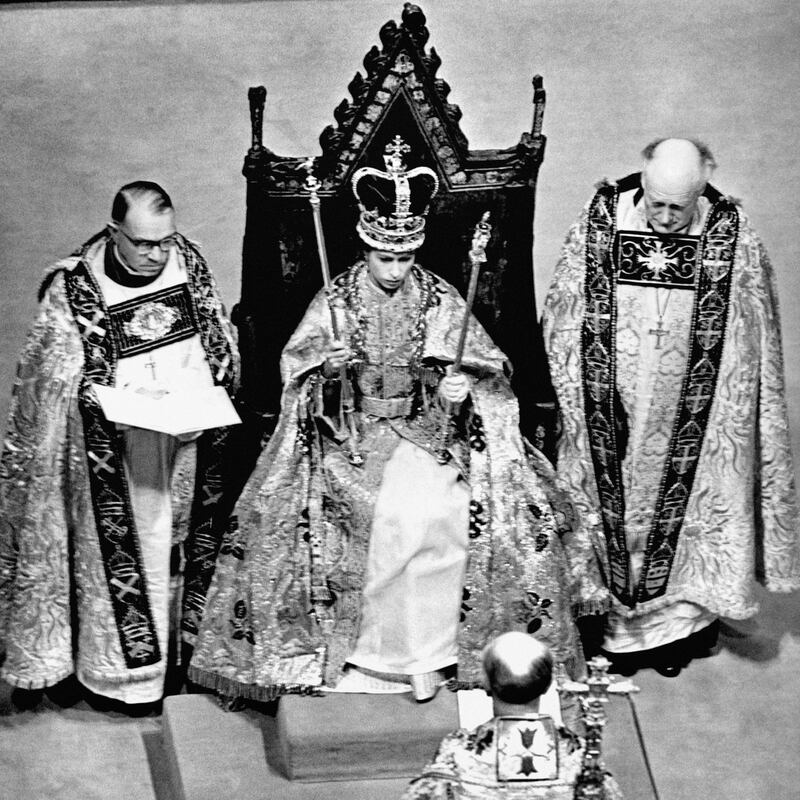A detailed diagram showing how organisers could avoid a collision of key figures during the coronation of Queen Elizabeth II in 1953 will be displayed in London.
The plan, which is part of a wider collection of coronation notes and papers, sets out to ensure “a smooth and dignified sequence of movement” during the ceremony on the altar of Westminster Abbey.
The diagram features arrows illustrating the movement for the anointing with holy oil — with the queen represented by a circle with the capital S and the Archbishop of Canterbury by a circle with the capital C.
The papers could provide a handy blueprint for King Charles's coronation nearly 50 years after his mother's ceremony. The current monarch is set to be crowned alongside his wife, Queen Consort Camilla, on May 6.
The exhibition at Lambeth Palace Library features material dating back to King Henry I’s coronation in the Middle Ages.
A typed comment setting out directions for the monarch, the Great Chamberlain, the Lord Chamberlain and several bishops, reads: “NOTE: There should be no collision if all move at the same pace.”
The plan adds that if the participants study the details closely “there should be no need for haste, no confusion of movement and plenty of room in which to move and manoeuvre”.
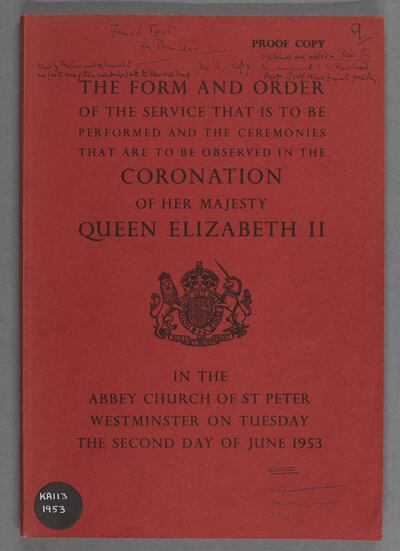
Geoffrey Fisher, who was archbishop of Canterbury, was responsible for drawing up the queen’s coronation rite.
Proofs of the text of the service show his scribbled annotations and corrections throughout, including the part where Prince Philip, the late Duke of Edinburgh, knelt in front of the queen to pay homage.
Lambeth Palace Library said the queen and Archbishop Fisher were keen for the prince to have a role in the service.
It said: “Where possible, amendments were made to the ceremonial to reflect this, the most significant of which was that the archbishop gave up his right to be the first to pay homage to the queen, in favour of the duke.”
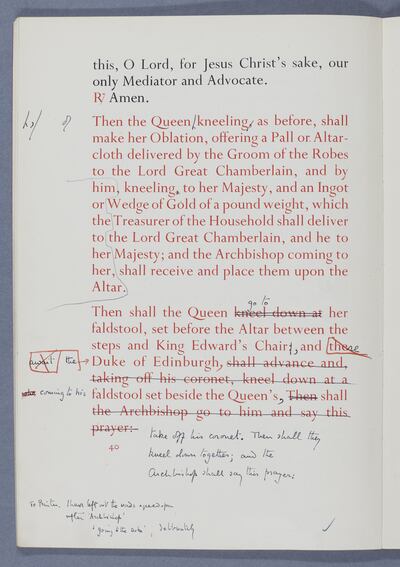
Large banners used for the 1902 coronation of Edward VII are on show.
Archbishop of Canterbury Frederick Temple was suffering from failing eyesight and there were concerns for his health.
Special prompts were printed on boards in huge font for him to read from to accommodate his sight problems, with the king repeatedly muttering during the coronation: “I am very anxious about the Archbishop.”
Among the other items in the exhibition will be a pamphlet arguing for a change to George III’s procession in 1761, suggesting a “more commodious and proper” longer alternative, which, in the end, was ignored for a shorter route.
Highlights also include the Coronation Charter of Henry I, the manuscript of the coronation service prepared for King William III and Mary II, a letter from King George VI thanking the archbishop of Canterbury for his part in the coronation and the Bible upon which Elizabeth II swore her Coronation oath.
The free display will open to the public at the library in London from April 12 to July 13.
